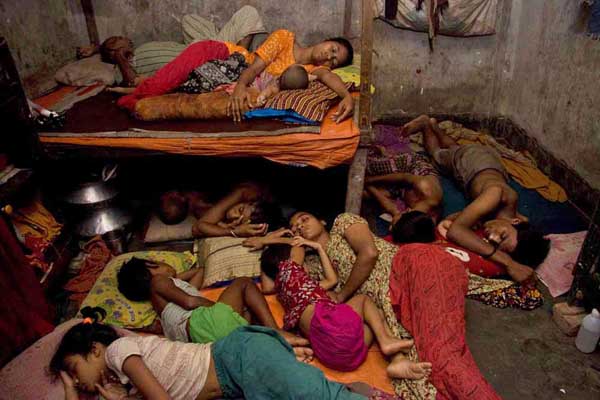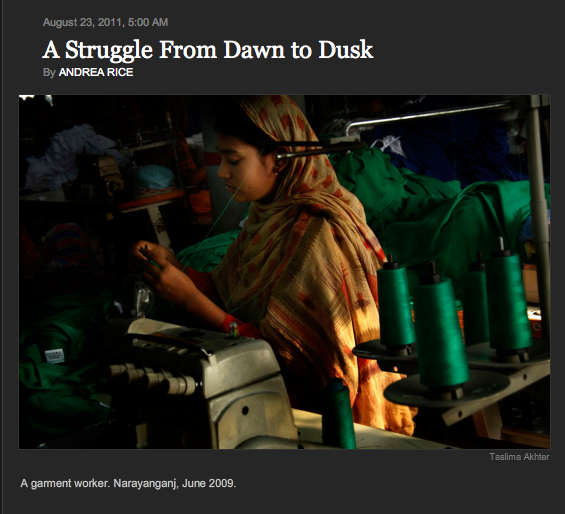


The garment industry is one of the?largest industrial sectors in Bangladesh. It accounts for a good portion of the country?s exports and employs more than three million workers. Most of them are women.
?Workers toil from dawn to dusk on minimum wage,? said?Taslima Akhter, a Bangladeshi photographer who has spent more than four years capturing the workers? movement for ?The Life and Struggle of Garment Workers.?
Ms. Akhter, 37, was compelled to bring to light some of the industry?s darker aspects, like dangerous working conditions and low salaries. As an activist, a photographer and a resident of Bangladesh, she sees the ongoing project as both a personal agenda and a civic duty.
Ms. Akhter said she believed that the struggle of garment workers ? particularly women ? was one of the country?s most pressing issues. A transition to democracy in Bangladesh would raise questions about women?s rights, she said, expressing hope that her project could help speed the country toward that goal? ? and inspire the workers to make their own voices be heard.
In 2006, garment workers in Bangladesh made less than $25 per month, Ms. Akhter said. Following a tremendous protest in 2010, their wages increased to just under $45 monthly ? still not a living wage.
That strike ? and the number of women who participated ? drove Ms. Akhter to continue her work on the project, most of which she photographed in and around her hometown, Dhaka, the capital of Bangladesh. (Outside Dhaka, she shot in Gazipur, to the north, and Narayanganj, to the east.) Ms. Akhter studied photojournalism at the?Pathshala South Asian Media Academy in Dhaka in 2007. She completed a master?s degree in philosophy from theUniversity of Dhaka. She just completed a six-week course on photography and human rights at New York University?s?Tisch School of the Arts as part of a?Magnum Foundation scholarship she was awarded in 2010.





